Indonesia – Part 5: Taman Sari – The Water Palace of the Sultan
Getting to Taman Sari
The Water Palace of Taman Sari is located about 2.5-3km south from Marlioboro Street in Jogjakarta. Since I was located just off the Marlioboro Street, I decided to take a walk all the way there. You can also catch a local motorbike taxi or rent your own motorbike to get there. The turn off to the palace is very small, make sure to follow Google Maps until you get there!
Entrance ticket to Taman Sari is 15,000 IDR with an additional 1,000 charged for cameras. You will receive a brochure that explains the history and architecture in both English and Bahasa Indonesia.
History of Taman Sari
The first Sultanate of Jogjakarta was formed around 1755. The Mataram Sultanate which reigned Java finally fell and split into two. At the inception itself, Jogjakarta sultanate was set up as a vassal state for the Dutch East India company who were setting up their bases in Java.
Taman Sari is thought to have been built in the mid 1700s. There seems to be an idea that it was built with the support of a Portugese architect. This was told to me by an on-site guide and is mentioned in several websites. However given that the Dutch were instrumental in forming the Jogjakarta Sultanate, and the colonial enmity between the Dutch and the Portugese, I found it difficult to believe. A quick search on Wikipedia also pointed out that there are some scholars who have questioned the same.
Taman Sari Water Palace
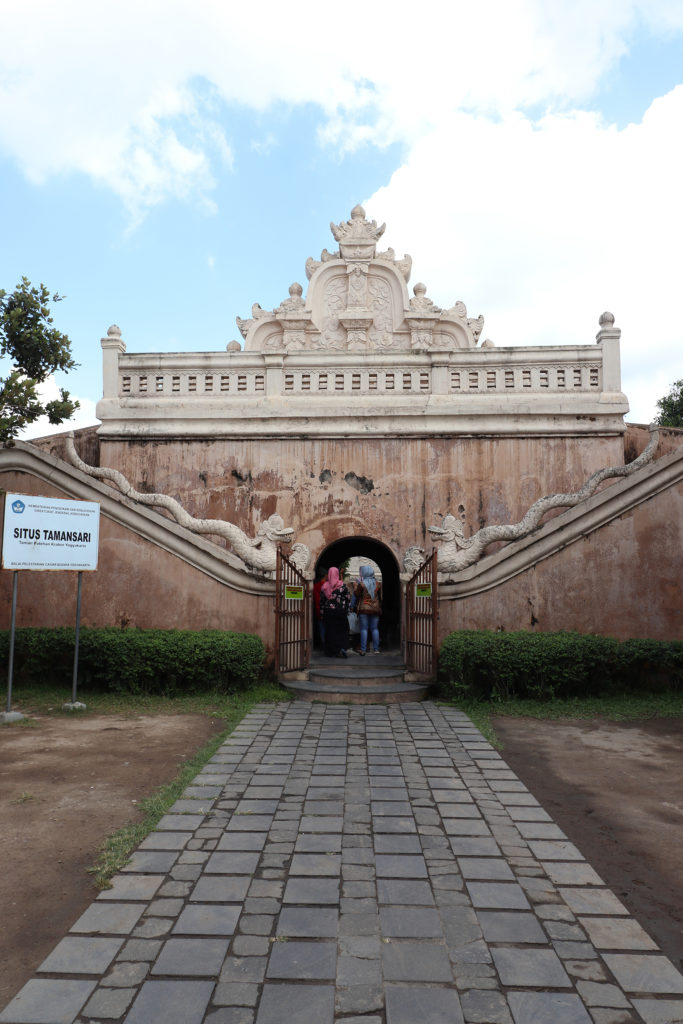
The entrance to Taman Sari is quite modest. 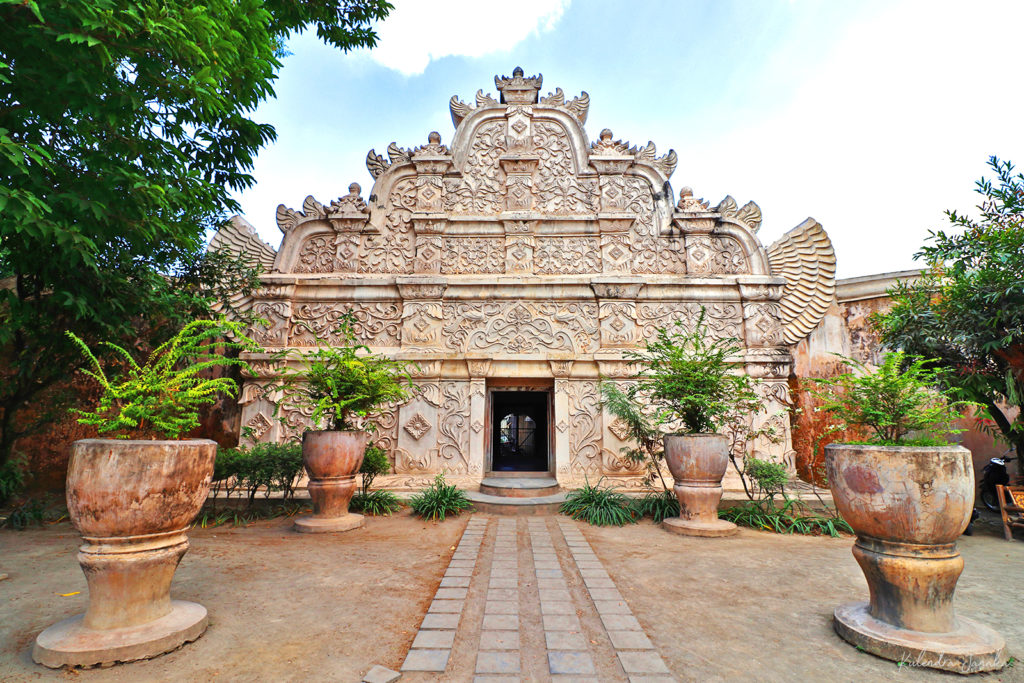
Not so modest entrance to the pool complex. 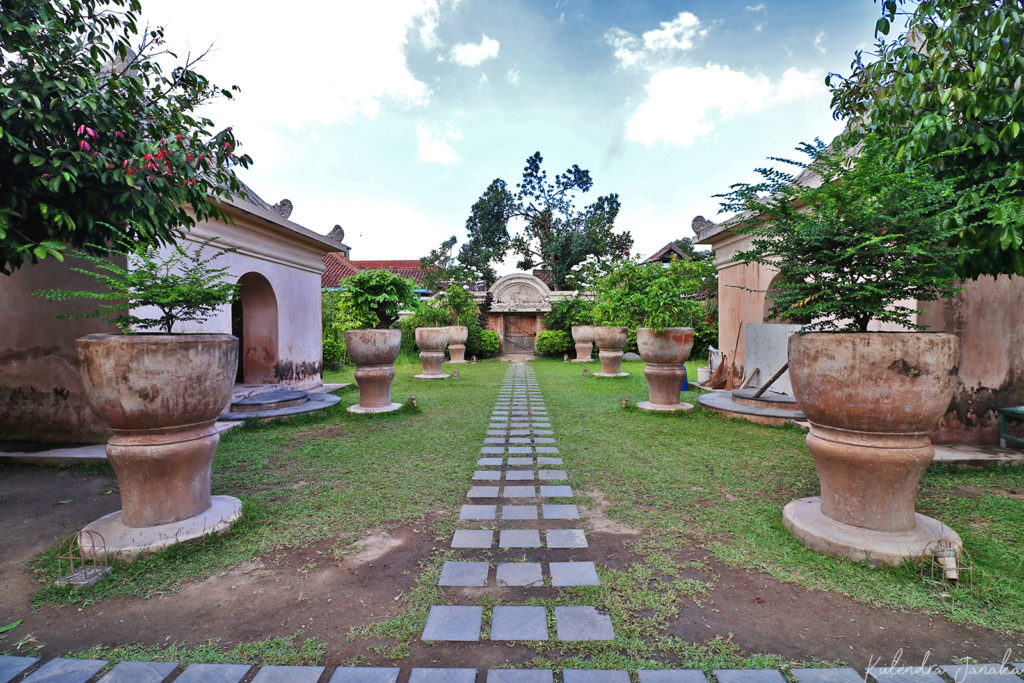
Outer courtyard as you enter the complex.
The main feature of the water castle today consists of two courtyards flanking a central pool complex. The central pool complex itself has three pools. It is said that two of the pools were reserved for the sultan’s daughters and concubines. The third pool which provides a lot more privacy was only for the sultan to have some private time with his concubines.
Prior to an earthquake in 1867, the castle also had a massive artificial lake. Several buildings were supposed to have acted as artificial islands in the lake. The earthquake apparently caused massive damage to the castle and the lake. Most of the buildings that acted as artificial islands are no more. From 1867 to now, many local settlers have got hold of the land that belonged to the palace. Most of the features of the original palace are either hidden or destroyed.
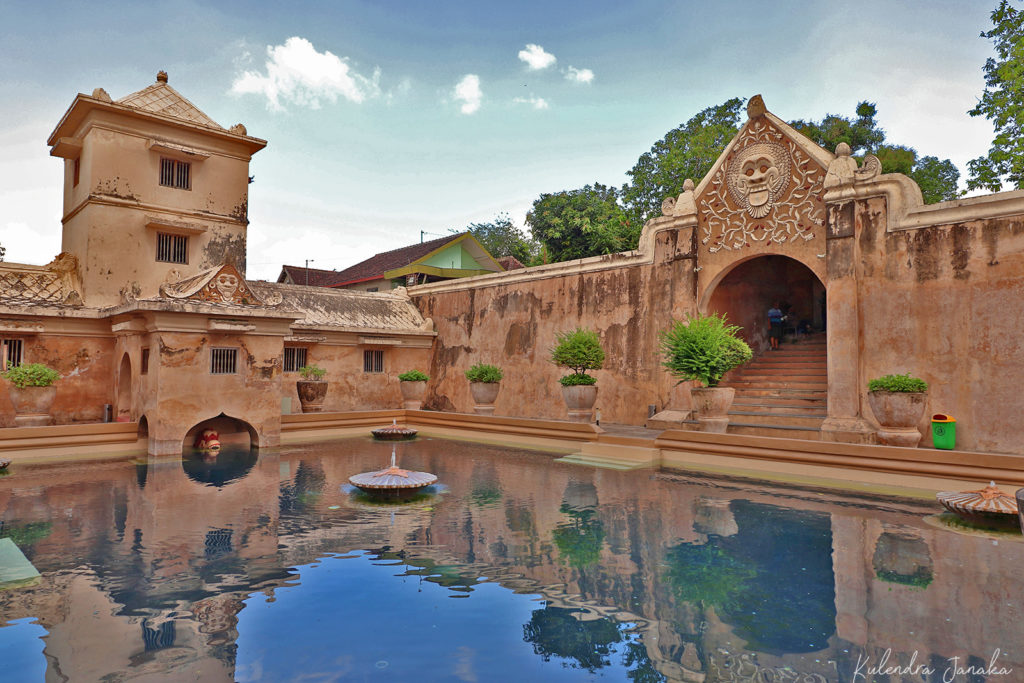
Pool complex at Taman Sari. 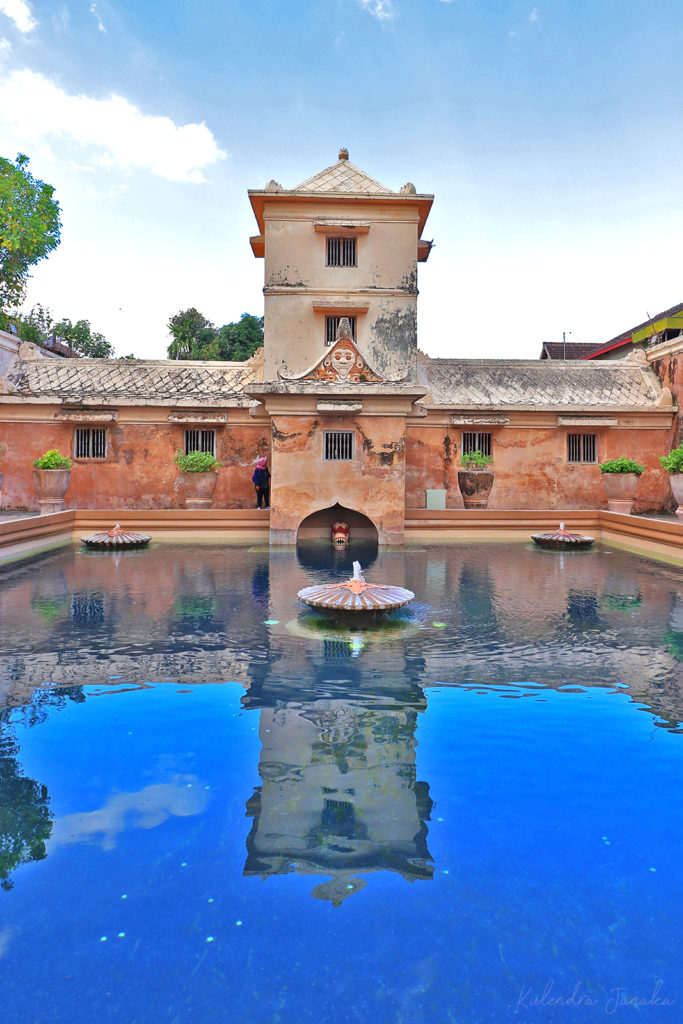
There was supposedly an artifical lake that filled the northern half of the complex. But only the pools are left now.
The Mosque – Sumur Gumuling
One of the main features that is still surviving from the old castle complex is the mosque. This can be accessed via a small walking path that goes through the houses around the courtyard towards North (slightly East). Ask any official or the occupants about the mosque and they would be more than happy to point you in the correct way.
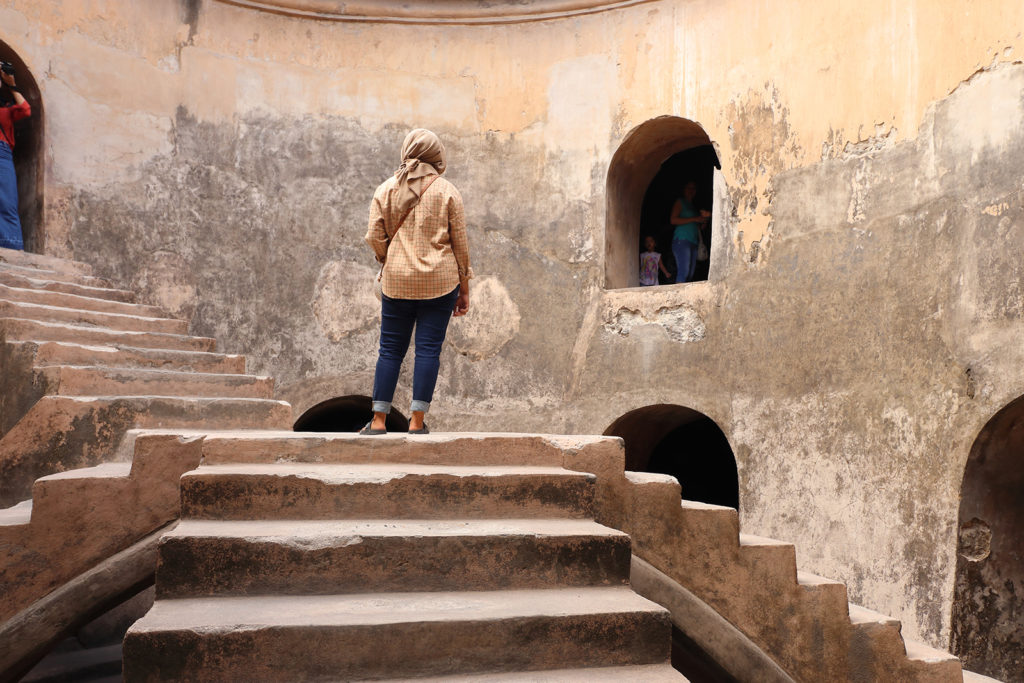
The four-way stairway at the mosque in Taman Sari
I did not honestly expect many visitors to turn up to something that was supposed to be a simple mosque. But it seems like some site somewhere published that the four way staircase of the mosque; the entire place was full of tourists either getting selfies or getting portraits. I was quite happy in one way that the place was too full for me to take any meaningful photo. This effectively forced me to check around the mosque instead of focusing on what happened to be the main tourist attraction. It was quite intriguing to watch all the tourists lining up along the stairways to get to that sweet spot in the center to get that perfect shot.
As typical of any mosque, the one in Taman Sari also has a Mihrab, or what I call a Mecca Compass. Muslims during their prayers, face the direction of Mecca or rather more specifically the Kaaba. All mosques around the world therefore have a marking in their walls that points to the direction of Mecca.
The mosque was originally surrounded by the artificial lake. This makes sense when you look at the design of the mosque. Unlike most of the mosques which are built above ground and having minarets and domes, the mosque at Taman Sari looks as if it was built to be hidden. The name for the mosque at present, Sumur Gumuling or the Gumuling Well, describes the building much better. It is built as a circular building that has an opening to the sky. There are no minarets, no domes. King may have visited the mosque across the lake via a boat and would descend through the tunnel that goes under the water into the mosque. Today there is no lake around the mosque, but the visitors still use the same tunnel to visit the mosque.
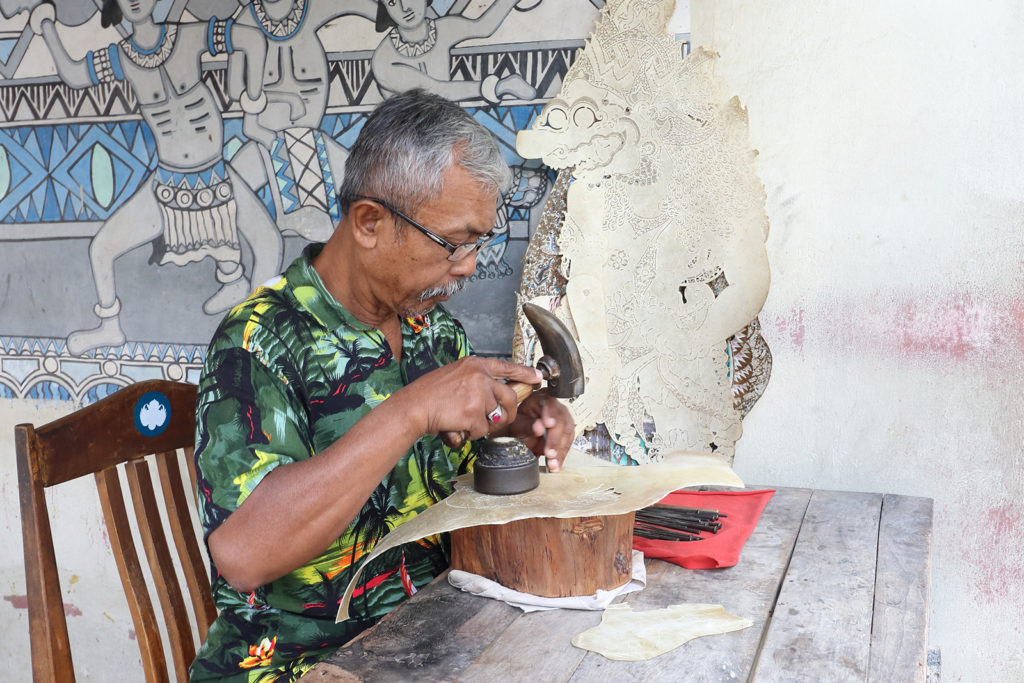
An old craftsman going about his job 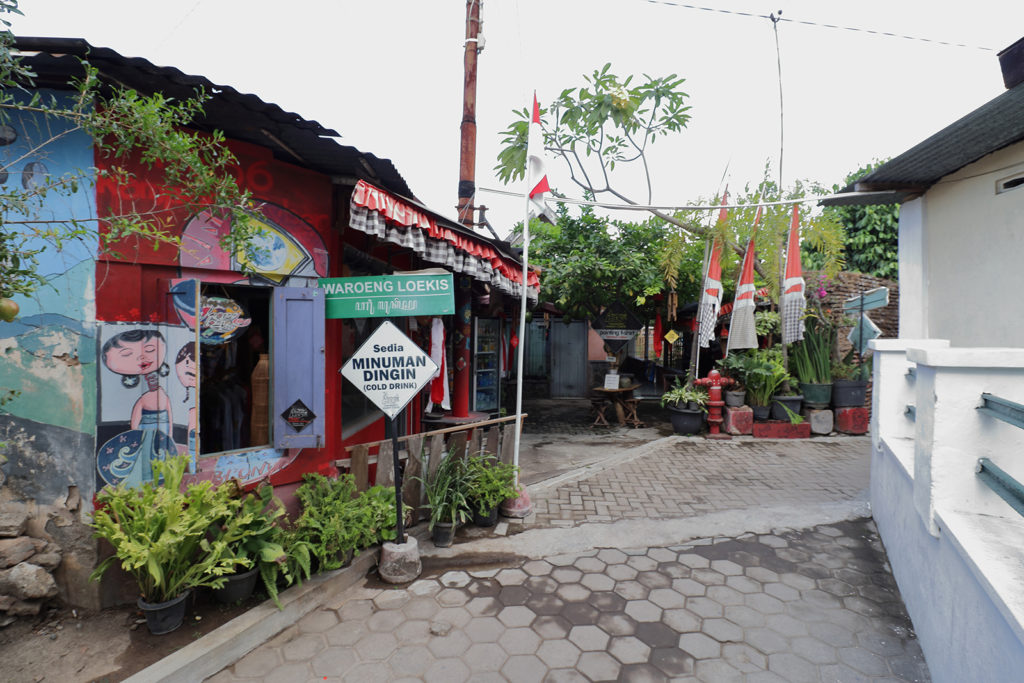
Taman Sari is now encroached upon by general public 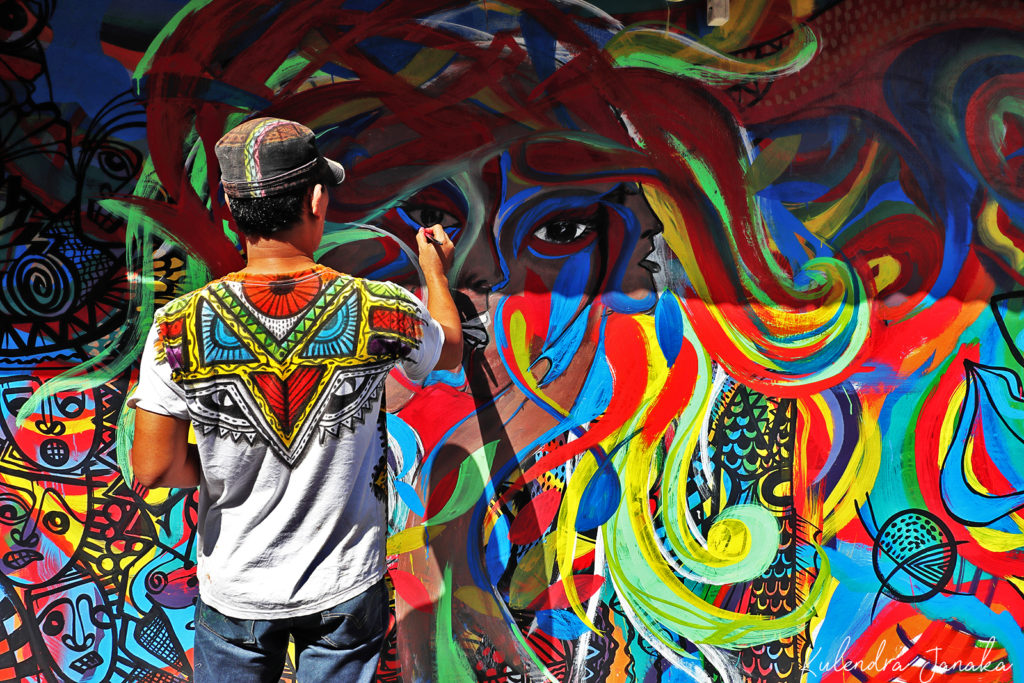
Old meets the new.
Other Palace Buildings
During my visit to Sumur Gumuling, an old man managed to get my attention. This man seemed to be a guide and was trying to talk to all the other tourists, but none of them seemed to take much note of him. When he saw me hunting for camera angles, he came over to me and voluntarily started explaining things about the mosque to me. We became quite the pals after I told him that I found the “Mecca direction” on my own.
Thanks to my new found guide, I found quite a few places inside Taman Sari that I’d have otherwise missed. This included the Kenongo island that is slightly to the east of Sumur Gumuling, and what he identifies as resting rooms of the Sultan and his family that are located to the south west of the main pool complex.
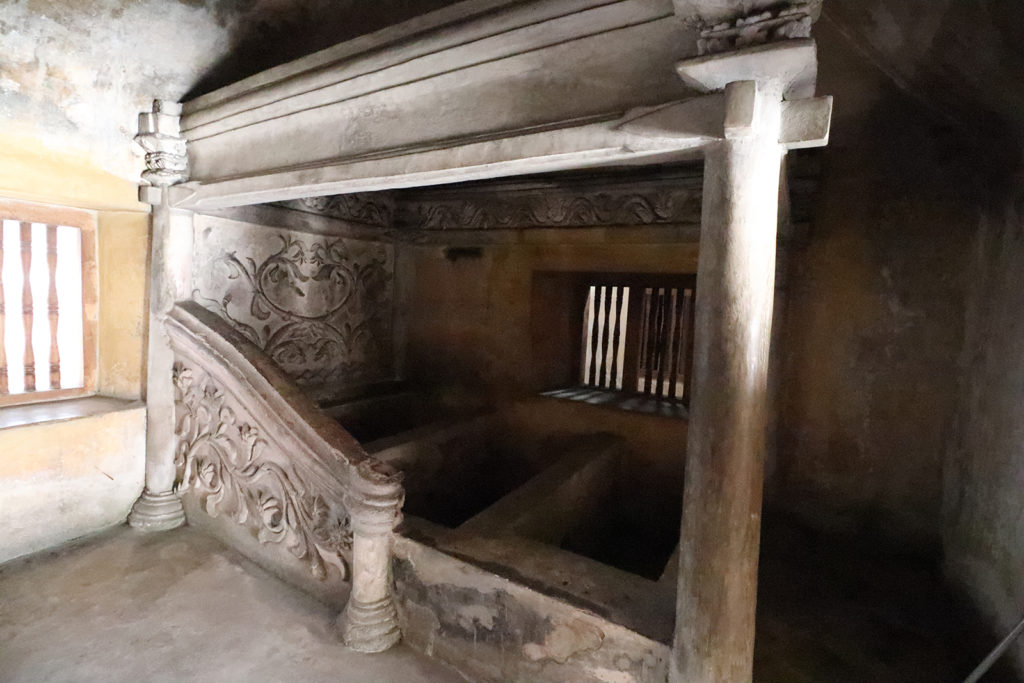
Sultan’s bed chamber
The resting area actually seems to be a building complex that apparently housed a kitchen, a bedroom for the Sultan and another room the guide identified as the rooms of Sultan’s children. However there doesn’t seem to be much of a reference to this area online. While the “Sultan’s room” was probably that, the rooms of what my guide identified as his children’s rooms are likely to be of his concubines.
As I left the Taman Sari site, I was quite puzzled about how the buildings were quite well preserved. They seemed to be only a hundred or so many years old. But that’s when it hit me, until nearly 200-250 years ago, this was the property of the Sultan. And that’s no time at all. But at the same time it is also mildly surprising that within that short time, royal property was encroached upon by the general public. What is left of Taman Sari today to call it a water palace is just the three medium sized pools. You will have to use your imagination to feel how it’d have been like to walk in to a complex at least three times bigger, surrounded by an artificial lake.